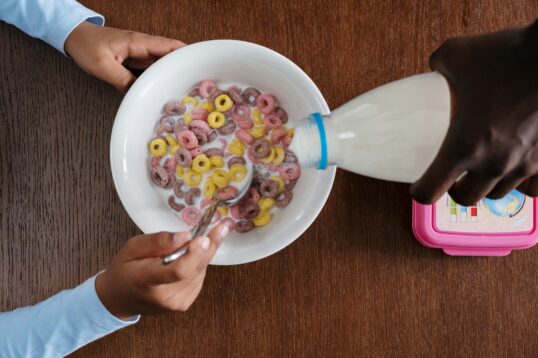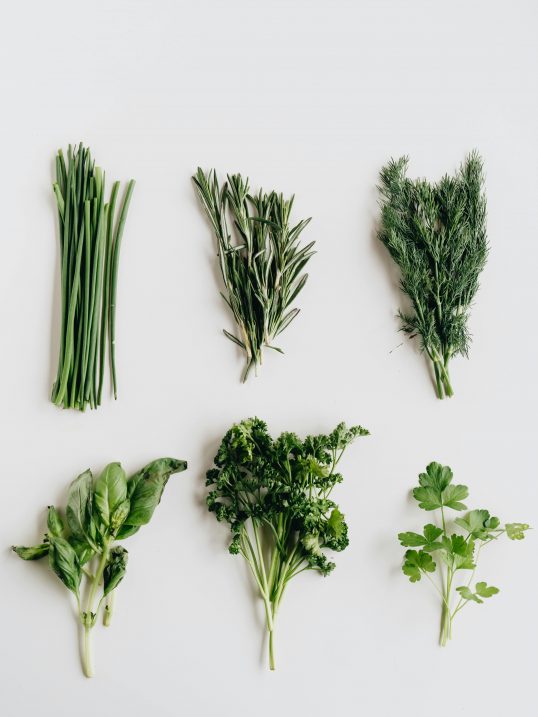You know that moment because we have all been there: you pour a glass of glossy milk, tend to your laundry and the dishes, answer a few emails, and suddenly, you’re staring at the clock, pondering the safety of that once-fresh drink.
In this post, we examine all the facts and uncover the mysteries of milk spoilage and storage.
How Long Can Dairy Milk Sit Out?
Dairy milk spoils quickly due to its high protein and sugar content, making proper storage essential. It should not sit at room temperature (above 40°F) for more than 2 hours or 1 hour if the temperature exceeds 90°F. Signs of spoilage include a sour smell, curdled texture, and off-taste.
- Room temperature: Dairy milk should not sit at room temperature (above 40°F or 4°C) for more than 2 hours following the USDA 2-hour rule. Bacteria can grow quickly at this temperature, making it go bad.
- High temperatures: If left out for more than an hour, dairy milk should be thrown away when the temperature is above 90°F (32°C).
- Signs of spoilage: You will know if your milk has gone bad by the smell. Take a whiff! The longer it sits, the more the texture will start to curdle, and it will taste sour, have a curdled texture, and have an off-taste.
How Long Can Non-Dairy Milk Sit Out?
Non-dairy milk, such as almond, soy, oat, and coconut milk, requires careful handling, especially once opened. Like dairy milk, it should not sit at room temperature for more than 2 hours or 1 hour in temperatures above 90°F. Spoilage signs include changes in color, texture, and smell, with separation indicating it’s time to discard.
- Room temperature: Non-dairy milk should generally not be left out at room temperature for more than 2 hours. While some varieties might be shelf-stable until opened, they should be treated similarly to dairy milk once opened.
- High temperatures: Similar to dairy milk, non-dairy milk should not be left out for more than 1 hour in temperatures above 90°F (32°C).
- Signs of spoilage: Plant-based milk’s signs of spoilage include changes in color, texture, and smell. If your plant-based, non-dairy milk has separated, throw it away!
Why Does Milk Go Bad?
Milk goes bad because of biological, chemical, and environmental factors and the ways these factors mix. The milk becomes sour because of the microorganisms growing in it, plus the activity of enzymes and the reactions of chemicals.
Microorganisms
Microorganisms, mainly bacteria, exist in milk and contribute to its spoiling.
- Lactic acid bacteria: These bacteria are naturally present in milk and begin to multiply once milk is collected. They turn lactose, the sugar in milk, into lactic acid. This acidification lowers milk’s pH, leading to sourness and curdling.
- Pathogenic bacteria: Harmful bacteria like Escherichia coli, Salmonella, and Listeria can contaminate milk during production, processing, or storage. These pathogens not only spoil milk but also pose serious health risks.
Enzymatic Activity
Enzymes, naturally present in milk, contribute to spoilage.
- Lipases: These enzymes break down fat molecules in milk. Lipases are what turn the milk rancid and off-tasting.
- Proteases: These enzymes break down proteins in milk. The result is a bitter taste and curdled texture.
Chemical Reactions
Chemical reactions within milk also lead to its spoiling. Here’s how:
- Oxidation: Exposure to light and air can oxidize fats and proteins in milk. This is what causes the bad taste and change in color. Fun fact: This is why milk is often stored in opaque bottles.
- Maillard reaction: This reaction between lactose and proteins happens during heat processing.
Environmental Factors
The conditions in the environment in the milk’s environment significantly influence how quickly the milk spoils.
Here are the three factors to take note of:
- Temperature: Warm temperatures speed up bacterial growth and enzymatic activity, causing milk to spoil more quickly. This is pretty much why we need to refrigerate milk. So it will last longer.
- Light exposure: Ultraviolet light can break down vitamins and oxidize the fats in milk. Milk is best stored in dark or opaque containers to reduce how much light it comes into contact with.
- Air exposure: Contact with air can introduce new microorganisms and promote oxidation. Milk should be kept tightly sealed to minimize exposure to air.
Can You Drink Milk If It Sat Out?
Milk left out at room temperature for less than 2 hours is generally safe to drink, but if it’s been out for more than 2 hours, it should be discarded due to increased bacterial growth.
At temperatures above 90°F (32°C), milk should not be left out for more than 1 hour. Always check for signs of spoilage, such as sour smell, changes in appearance (curdling or mold), or an off taste before consuming.
Duration and Temperature
- Less than 2 hours: If milk has been left out at room temperature (below 40°F or 4°C) for less than 2 hours, it is generally safe to drink. Bacteria growth is minimal within this period of time.
- More than 2 Hours: Milk left out for over 2 hours + should be thrown away. The risk of bacterial growth increases after this time period.
- High temperatures: When the temperature of the room is above 90°F (32°C), milk should not be left out for more than 1 hour. Higher temperatures accelerate bacterial growth, increasing the chance of it going sour and potentially making you sick.
Physical Changes
Before drinking milk that has been left out, check for one or more of these signs:
- Smell: Sour or off smells indicate bacterial activity and spoilage. If the milk smells unusual, it is probably not safe to drink.
- Appearance: Any changes in color, consistency (such as curdling or lumpiness), or the presence of mold are clear signs that the milk has spoiled. Yikes!
- Taste: The milk has likely gone bad if it tastes sour or off. Even a slight sour taste is a reason to chuck out the milk.
How to Keep Fresh for Longer
Here are some tips to help keep your milk fresh for as long as possible:
Proper Storage
- Refrigeration: Always store milk at or below 40°F (4°C) in the refrigerator. Milk should be placed in the coldest part of the fridge.
- Sealed containers: Keep milk in its original container or tightly sealed.
- Opaque containers: Use opaque containers to protect milk from light.
Handling Practices
- Prompt return: After pouring milk, return the container to the refrigerator ASAP!
- Clean utensils: Use clean utensils when handling milk to prevent introducing contaminants that can cause spoilage.
- Minimize exposure: Avoid leaving milk out on the counter or table.
H3 Purchase and Consumption
- Buy fresh: Choose milk with the latest expiration date to maximize its freshness.
- FIFO method: Use the “First In, First Out” method to ensure older milk is used before newer milk.
Best Ways to Store Milk
Store milk in the refrigerator at or below 40°F (4°C), ideally in the coldest part, usually at the back, rather than in the door where temperatures fluctuate.
If you need to store milk longer, freezing it is an option. You can freeze milk for up to 2 months.
Insider’s Insight
Keeping milk fresh and safe means knowing what causes it to spoil and storing it properly.
To prevent bacteria from growing, both dairy and non-dairy milk should not be left out at room temperature for over 2 hours or 1 hour in hot weather.
Check the milk’s smell, look, and taste to see if it has gone bad. To keep milk fresh longer, store it in the refrigerator at or below 40°F (4°C), use clean, airtight containers, and put it back in the fridge right after using it.
By following these tips, you can make your milk last longer and stay safe to drink. Enjoy!






